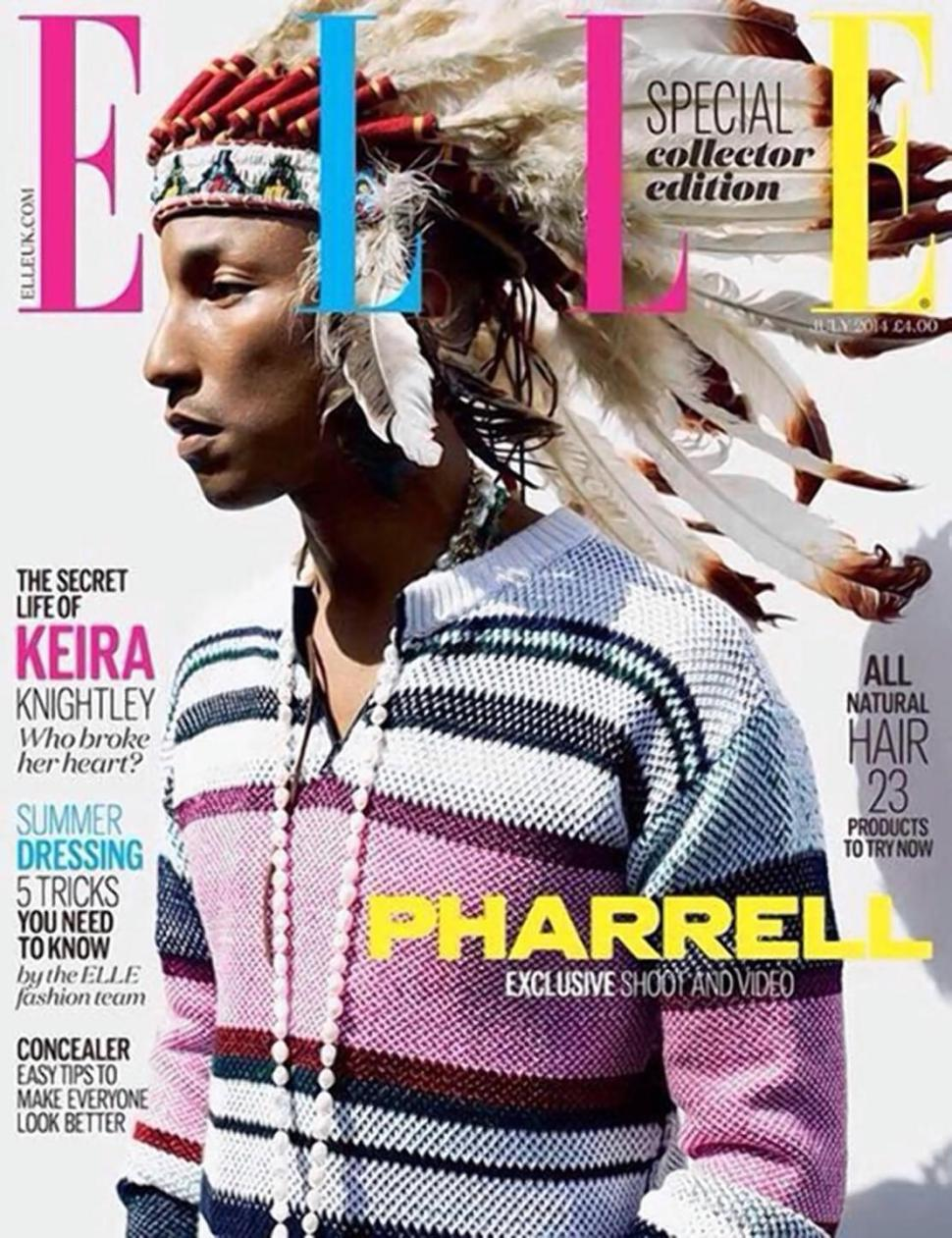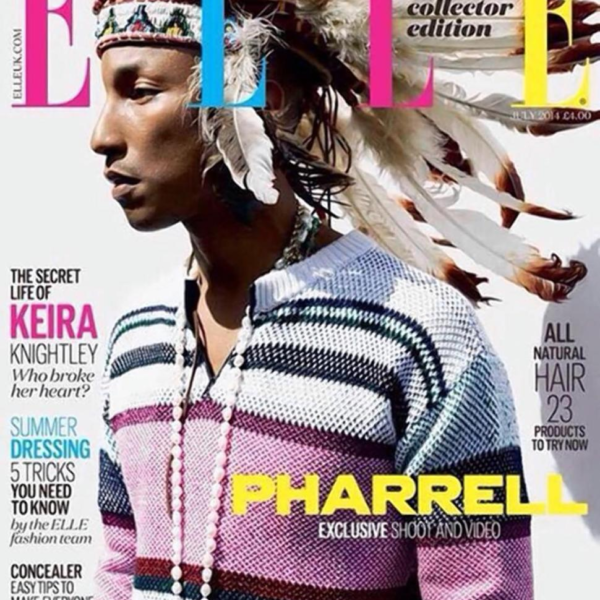
A really nice and thoughtful article by Susan Scafidi on Pharrell Williams’ wearing a Native American headdress on the cover of Elle Magazine last year. The controversy, as well as the article, are admittedly old, but Scafidi’s thoughts on cultural appropriation are still relevant and very worth reading. An excerpt:
Fashion is notorious for ransacking the world’s closets in search of inspiration, but designers are no more culturally acquisitive than chefs who prepare fusion cuisine, musicians in search of a world beat, or any of us who pepper our conversations with foreign phrases in search of a certain conversational je ne sais quoi. The globe is a rich buffet, and those of us blessed with choice naturally go in search of cultural capital and varied experience.
The link between clothing and personal identity, however, means that putting on another culture’s clothes is a greater claim to ownership and belonging than sampling sushi or buying a burrito for lunch. As long as nudity isn’t a socially acceptable option, we are what we wear – and our desire to define ourselves through borrowed finery can either enrich or impoverish the source community.
Staying on the right side of the inspiration/appropriation divide requires individual awareness and attention to three S’s: significance (or sacredness), source and similarity. What’s the significance of the necklace you’re about to put on: is it just jewelry or a set of prayer beads? Did the source community invite you to wear that traditional robe, perhaps via voluntary sale, and does the community still suffer from a history of exploitation, discrimination or oppression? And how similar is that designer adaptation to the original: a head-to-toe copy, or just a nod in the direction of silhouette or pattern?
You can read the rest here. Incidentally, Scafidi also has written a book titled Who Owns Culture, in case you’re interested in this topic.
